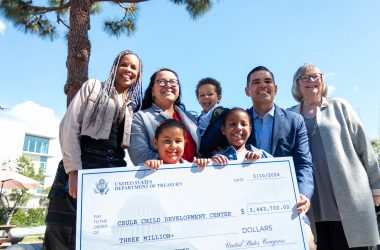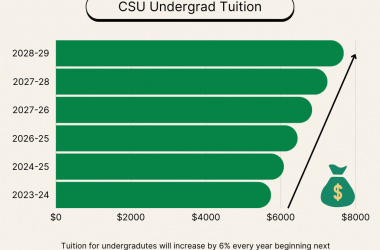Tables featuring signs and boards for several organizations circled the Earl Burns Miller Japanese Garden Thursday leaving no empty space in sight aside from a few chairs for people to rest.
Food was free, so naturally there was a lengthy line for the third annual Green Generation Mixer, an event that was attended by people of all ages.
Visitors roamed freely to the various tables and asked the exhibitors questions. It was a day to be green, to celebrate and inform others about the importance of using or transitioning to sustainable methods.
Billboards, designed by Cal State Long Beach’s Saturday MBA students, showcased proposed changes to campus food stores. Some plans featured wood flooring, along with different ways to organize and display their products. Other ideas featured economically friendly packaging and a ‘Green’ points system that would utilize students’ ID cards.
Other participants included co-host of the event, Associated Students Inc., along with the Environmental Science and Policy Club, Mixt Media Arts, Aquarium of the Pacific and Long Beach Time Exchange.
Music was provided by ASI President John Haberstroh and ASI Vice President Jonathon Bolin’s band Hail_Nero and folk rock band Natural Hi-Fi.
Leah Young, a community outreach member for the Aquarium of the Pacific, explained the various renovations the aquarium has undergone to reduce its carbon footprint. The most prominent addition, she said, was the watershed classroom, which is an exhibit with a three-dimensional watershed model that teaches the importance of protecting watersheds by conserving water.
“It’s got a vegetative roof, so you can grow stuff up on the roof,” Young said. “There’s no heating or air conditioning in there … The newest part that we’re adding in the back actually has solar panels on it and not only covers the area so we can work back there and not fry, but that it’s generating electricity for the aquarium.”
The Aquarium of the Pacific’s table also had a display that detailed “bad sushi,” such as unagi, or freshwater eel. According to the display, eel fishing puts a stress on the population that could eventually led extinction of the species.
Oliver Gonzales, a junior geography major, said he was surprised to learn that some sushi is harmful to the environment. He said he will think twice about what kinds of sushi he eats.
“I love sushi, but if I want to conserve the next generation, then I will have to stop eating as much,” Gonzales said.
The Long Beach Time Exchange informed visitors about “time banking,” which allows members to give and receive services such as gardening or graphic design in exchange for “time credits,” a substitute for monetary currency.
Veronica Benini, a steering committee member, said the concept of “time banking” was developed in 1980 by law professor Edgar Cahn in response to cuts in government funding.
Benini said members of the organization must be Long Beach residents and must pass an interview process, but neighboring cities such as Lakewood and Torrance are free to participate, too. She said it’s recommended that members live close to each other because it is convenient for people to meet without driving too far.
“Since I’ve joined, I’ve earned 120 credits just for offering a service like dog-walking,” Benini said. “Like if someone needs a ride, you can earn credits for that. Other services include a date for a night or just companionship.”
Senior journalism major Haiyun He, who attended the event, said she learned a lot, especially about the Long Beach Time Exchange.
“Originally, I didn’t understand the connection between time exchange and environmentally friendly,” He said. “But actually, it’s a good way to build the community and to make it closer.”



